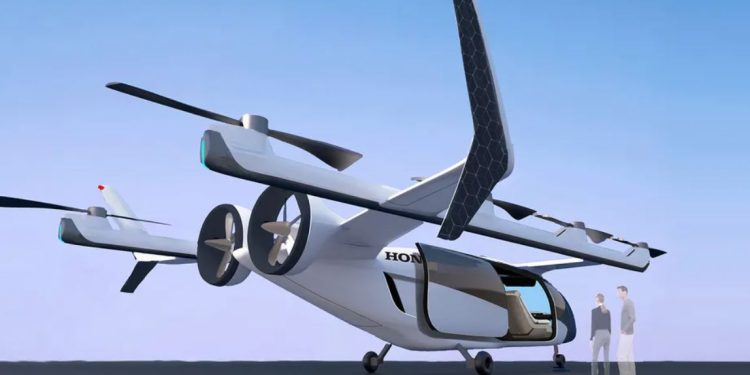Robots, rockets, & flying cars: Honda confirms big tech spend
While Honda might be a bit behind the eight-ball when it comes to electric vehicle tech, the Japanese firm appears to be keen to compensate in other areas of motoring’s expanding tech arena.
Honda has confirmed a significant US$45billion investment on research and development across three areas; robots, rockets, and electric vertical takeoff and landing ‘flying cars’ over the next six years.
“Core technologies in these areas are connected to our existing businesses,” Marcos Frommer, head of corporate communications for Honda, told US press earlier this week, “and we are pursuing these new areas as an expansion of our core business as a mobility company.”
It’s an interesting pivot for Honda, given the brand’s recent struggles with finding manufacturers to buddy up with on EV development.
It does at least have some history with robots. Over a period of almost 20 years, Honda developed a humanoid robot called Asimo. Seven generations of Asimo were developed over 11 years, with Honda eventually getting Asimo to run at up to 9km/h and walk up stairs.
It was reported in 2018 that Honda had pulled the plug on its development of Asimo. However, with this new announcement, it’s possible that the brand could rekindle the project.
Honda is the second car manufacturer to recently reiterate its interest in electric vertical takeoff and landing (e-VTOL) vehicles, following Hyundai’s musings earlier in the year.
It’s reported that Honda is considering entering the fledgling urban taxi service space race. Its e-VTOL under development is said to use a hybrid powertrain, allowing for longer range trips like New York to Boston, according to tech outlet The Verge.
Range is said to be rated at 400km according to Frommer. The brand will decide on whether it’s going to commit to building aircraft by 2025. If the project is greenlit, it aims to launch a commercial programme by 2030.
As far as rockets go, Frommer indicates that Honda is looking into developing re-usable rockets, perhaps not unlike those developed by Elon Musk’s SpaceX programme. According to Frommer, it’s been developing rockets since 2019.
“If we can use such rockets to launch small low orbit satellites, we can expect to evolve our core technologies into various services, including connected services,” Frommer added.
“All of the initiatives we introduced today are for the challenges Honda takes on in new areas, but the underlying passion of Honda to use our technology to make people’s lives more enjoyable remains unchanged,” said Keiji Ohtsu, president of Honda research and development.
“Ever since the company’s founding, the wellspring of Honda’s challenges has always been the people at Honda who generate original technologies and ideas. Through the creation of new mobility, Honda will continue striving to change the value people place on mobility and make positive changes to our society.”





